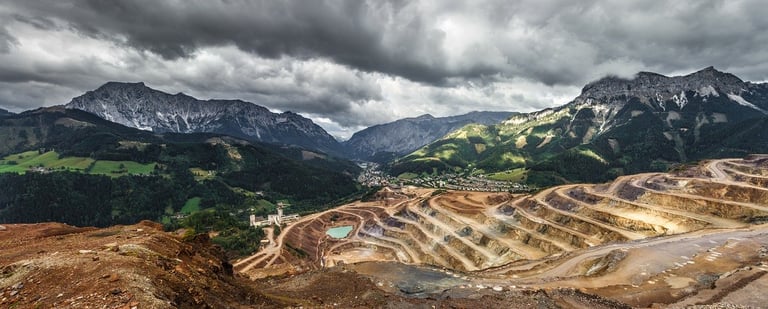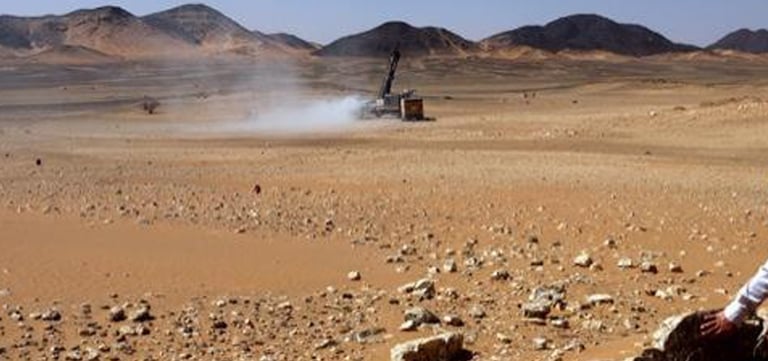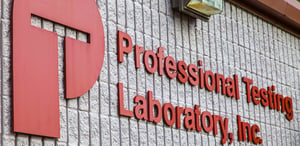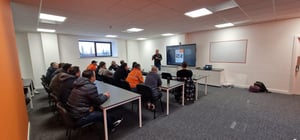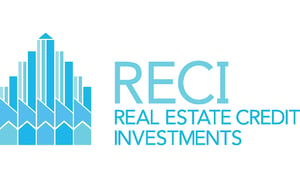Metal Tiger plc (LON:MTR), the London Stock Exchange AIM listed investor in strategic natural resource opportunities, today provided an update on the substantial Ore Reserve upgrade for the T3 Copper Project (“T3”), held 100% by MOD Resources Limited (“MOD”), in the Kalahari Copper Belt, Botswana following MOD’s announcement earlier today. Metal Tiger currently holds approximately 10.48% of the issued share capital of MOD.
Highlights
· T3 open pit Ore Reserve increased to 34.4Mt at 1.0% Cu and 13.2 g/t Ag (JORC 2012 compliant).
· Ore Reserve contains 342.7Kt (approximately 756Mlbs) of copper and 14.6 Moz of silver. Ore Reserves were calculated using US$2.91/lb copper and US$16.81/oz silver price and average drill hole spacing of 50m.
o 61% increase in total tonnage compared with the Pre-Feasibility Study, announced January 2018.
o 57% increase in contained copper and 107% increase in contained silver.
· Open pit mine design in six stages, with 3Mtpa conventional processing plant, provides a life of mine (“LOM”) over 11 years, with a LOM stripping ratio of 5.7:1.
· T3 Feasibility Study (“FS”) on track for completion at end of March 2019.
· Infill drilling within the boundaries of the first two stages of the proposed T3 Copper Project open pit is currently ongoing. The 60-hole programme has the objective of upgrading early production into the higher confidence, JORC compliant Measured Resource category. Assay results for the first 11 infill holes were announced 12 March 2019.
Michael McNeilly, Chief Executive Officer of Metal Tiger, commented:
“We are very pleased to report the significant JORC Compliant Ore Reserve upgrade for MOD’s proposed T3 Open Pit mine project in Botswana.
The upgrade constitutes a 61% increase in total tonnage compared with the Pre-Feasibility Study, with a corresponding 342.7Kt of copper and 14.6 Moz of silver, that should positively impact on the already strong project economics. We look forward to the findings of the T3 Feasibility Study which is expected to complete before the end of this month.”
This announcement coincides with MOD’s announcement earlier today which can be viewed through the following link: https://www.asx.com.au/asx/share-price-research/company/MOD
T3 Open Pit Ore Reserve
The Ore Reserve estimate (JORC 2102 compliant) uses modifying factors presented in the draft FS which is on schedule for completion by the end of March 2019. The FS team consists of independent external consultants and experienced MOD employees and contractors. The components of the FS yet to be completed are not considered to have a material impact on the Ore Reserve upgrade. All modifying factors used for the Ore Reserve are within the tolerances expected for a FS.
|
Ore Reserve Category |
Tonnes (Mt) |
Copper |
Silver |
||
|
Grade (%) |
Kt |
Grade (g/t) |
Moz |
||
|
Proven |
– |
– |
– |
– |
– |
|
Probable |
34.4 |
1.0 |
342.7 |
13.2 |
14.6 |
|
Total Ore Reserve |
34.4 |
1.0 |
342.7 |
13.2 |
14.6 |
Notes:
1. The Probable Ore Reserve is based on the Indicated category of the Mineral Resource. No Inferred category has been included.
2. Proven Ore Reserves are expected to be defined following the definition of a Measured Resource from the infill drilling programme.
3. The lowest grade of ore added to the process plant feed in the FS is 0.22% Cu.
4. Ore Reserves are calculated based on a copper price of US$2.91/lb and a sliver price of US$16.81/oz.
5. Ore loss and dilution were applied to the Mineral Resource model in a two-step process which resulted in an ore loss of approximately 9% and a diluted tonnage addition of approximately 8%.
6. Metallurgical testwork recoveries were applied in accordance to the recovery algorithms developed from the variability testwork programme conducted during the FS.
7. Appropriate modifying factors were applied.
Draft FS financial modelling, currently being finalised, shows the project is economically viable under current assumptions and within a range of reasonable sensitivities to the assumptions. In the opinion of the competent persons (“CPs”), cost assumptions and modifying factors applied in the process of estimating Ore Reserves are reasonable.
Material mining, processing, infrastructure, economic, commercial, environmental and social assumptions were considered during the Ore Reserve estimation process. Individual CPs take responsibility for these key areas.
Proposed T3 Open Pit
The proposed T3 open pit mine site is located approximately 80km north-east of Ghanzi and 200km south-west of Maun, Botswana. The proposed T3 mine and associated mining infrastructure lies within freehold farm land within PL190/2008. MOD’s in-country operating company, Tshukudu Metals Botswana (Pty) Ltd has entered into a binding agreement to acquire the 25km2 area of the farm, which will be the subject of a mining licence application expected in mid-2019.
The Mineral Resource has been defined along an approximately 1.5km long strike length and the copper and silver sulphide mineralisation occur in veins and disseminations within host rocks that include mudstone, siltstone, sandstone and marl units considered part of the D’Kar Formation.
Mineralisation is continuous along both strike and down dip within the pit, dominated by chalcopyrite with chalcocite and bornite copper sulphides occurring in lesser amounts. Mineralisation extends from shallow depth (circa 25m depth) to the limit of drilling to date at approximately 480m vertical depth.
The T3 mineralisation type is described as a sheeted vein deposit dipping at 20-30 degrees to the northwest with varying widths of disseminated mineralisation around the veins. The deposit may represent multiple stacked, mineralised veins and units, thrusted one upon the other.
This interpretation opens potential for resource extensions along strike east and west, as well as at depth, below the pit and down dip towards the north west. Drilling continues to test for potential underground extensions at depth across the T3 Copper Project.
Mining Assumptions
The T3 Copper Project is proposed to be mined by conventional open pit mining methods and equipment. The Ore Reserve is supported by pit optimisation, pit design and production scheduling, developed as part of the FS.
The selected mining method, design and extraction sequence suit the T3 orebody characteristics, minimise dilution and ore loss, defer waste movement, conform to maximum rates of vertical mining advance and utilise planned process plant capacity.
The open pit mine schedule is based on realistic mining productivity factors, and material movements that take operational realities into consideration.
The mining operating costs are supported by contractor estimates based on a detailed request for quotation. These estimates were reviewed and validated internally by a shadow estimation process. The shadow estimate costs were used in the financial model and aligned closely to costs assumed in the earlier pit optimisation process.
Geotechnical Modelling
Geotechnical modelling completed by independent consultant SRK Consulting (UK) is based on field logging and laboratory testing of selected diamond drill core samples from purpose drilled geotechnical diamond drill holes. The open pit designs are based on the recommended geotechnical design parameters and assume dry slopes based on the assumption of adequate dewatering and/or depressurisation ahead of mining.
The geotechnical parameters were applied uniquely to each of the following three zones:
o Top 20m (unconsolidated sands and weathered material) has an Overall Slope Angle (“OSA”) of 27 degrees;
o Relatively shallow footwall OSA of 35 degrees, effectively following the base of the ore zone below approximately the first 100 vertical metres of mining; and
o Hanging wall OSA is considerably steeper at 57 degrees.
Final walls are established on the footwall with the initial stages of mining. The likely performance of the hanging wall zone can be assessed by the interim hanging walls of the pit stages and adjusted as required.
Hydrogeology
A separate hydrogeological report was prepared by independent consultants Knight Piesold Consulting which considered dewatering requirements (specifically targeting the Stage 1 pit), drawdown impacts on surrounding farms and capacity of the water supply borefield. The study identified that the groundwater at T3 is fresh, slightly alkaline and largely conforms to the in-country drinking water guidelines and has the potential to meet the T3 Copper Project water demand.
Mining Ore Loss and Dilution
Mining ore loss and dilution modifying factors were implemented by regularising the mineral resource model to a Selective Mining Unit (SMU) with a block size of 5mE x 5mN x 2.5m RL. Sensitivity analysis utilising various SMU block sizes was completed and checked against a 1m skin around a 0.4% copper grade shell. An ore loss of approximately 9% and a diluted tonnage of approximately 8% was realised. The impact of ore loss and dilution has resulted in a 2.7% loss of contained copper metal within the reserve.
Cut-off grade
The final pit design is based on a conservative Whittle pit shell defined by a revenue factor of 0.85 (85% of the assumed metal prices). The production schedule has targeted utilising a copper cut-off grade of 0.25%, whereas the marginal break-even grade ranges between 0.18% to 0.20% copper, dependent on silver credits.
Low grade is classified as material between the marginal break-even grade and 0.25% copper grade. Low grade stockpiles will be utilised to maintain process plant feed rates during periods of high waste movement and to maintain a steady total material movement between periods.
Infrastructure
The proposed mine site layout includes a single pit with haul roads connected to a single waste rock dump, mineralised waste dump, low grade stockpile and a run of mine (“ROM”) pad. There are surface water diversion channels, surface dewatering bores, light and heavy vehicle workshop facilities, explosives storage, a planned 3.0Mtpa processing plant, supply facilities, technical services facilities, and administration facilities.
The workforce will either reside locally in nearby townships or commute and reside at a dedicated camp in Ghanzi during rostered days on. The current accommodation camp consists of a 40-person self-contained unit accommodation camp. The camp will be expanded to accommodate 400 people, with additional temporary capacity during construction.
To meet the initial processing and dewatering requirements for the Stage 1 pit, a minimum of one production bore and 14 pit dewatering bores are required, of which eight have already been installed. Pumping tests will be undertaken on all future bores and longer-term pumping tests will be undertaken on selected existing bores after FS completion and before commencing pit dewatering and pre-stripping activities.
The Botswana Government has awarded contracts for the extension of a 220kV grid power transmission line along the A3 highway that joins Toteng and Ghanzi, approximately 14km by road from the T3 Copper Project, scheduled to be available during the first quarter of 2020. MOD has maintained regular communication with the Botswana Power Corporation (“BPC”) to confirm the scheduled availability of power. MOD plan to utilise grid power as the primary power supply for the T3 Copper Project.
Metallurgical and Processing Assumptions
The process plant is designed for an annual average throughput of 3.0Mtpa. The copper recovery plant and associated service facilities will process ROM ore delivered to a single stage primary crusher. The crushed ore will be stockpiled and fed to a two-stage grinding circuit using SAG and ball milling. Copper minerals in the ground ore will be concentrated in a conventional copper flotation circuit, made up of roughing, regrind and a single stage of cleaning. Concentrate from the cleaning stage will be thickened then filtered on site prior to transporting to Walvis Bay in Namibia. From Walvis Bay the concentrate will be shipped to third-party smelters.
Grinding and flotation test-work has established mill design parameters and copper recovery estimates for the FS. The mill will process a total of 34.4Mt over 11 years at an average grade of 1.0% copper and 13.2g/t silver. Recoveries for copper and silver are 92.9% and 88.0% respectively, averaged over the mine life.
Tailings from the roughing and cleaning stages will be pumped to the engineered, HDPE lined, tailing storage facility (“TSF”) located south of the proposed mine. The TSF is designed to store approximately 34.4Mt of conventional thickened tailing.
Cost and Economic Assumptions
The capital cost estimate for the development of the T3 Copper Project has an accuracy level of ±15%.
Data for these estimates have been obtained from numerous sources including:
o Feasibility level engineering design
o Mine plan
o Topographical information obtained from site survey
o Geotechnical investigation
o Budgetary equipment proposals
o Budgetary unit costs from local contractors for civil, concrete, steel and mechanical works
o Data from recent completed similar studies and projects
o A preliminary mine closure plan (with costs developed from first principles)
The operating cost estimate includes all costs associated with operating the mine, process plant and general and administrative functions and has been developed to an accuracy level of ±15%.
The operating costs were determined from mining contractor and supplier quotes and built using first principles, and are developed using inputs from numerous sources including:
o Supplier quotations for processing consumables and maintenance rates
o Detailed scheduling of the fleet requirements
o Grinding power requirements derived from comminution testwork
o Reagent consumption from metallurgical testwork
o Reagent & consumable costs from supplier quotations
o Logistics & transport costs from supplier quotations
o Manning levels developed from typical organisation charts and work rosters
o Personnel salaries & overheads sourced from the Ghanzi region
o Previous study assessments
Concentrate treatment and refining charges (TC/RC) are derived on the basis of recent annual benchmark TC/RCs as agreed between large mining and large smelting groups and as adopted by the industry, less applicable discounts. An allowance has been made for all government royalties, including 3% for copper and 5% for silver on a net smelter return basis.
A long-term copper price forecast of US$3.08/lb (in real 2019 terms) is applied in the financial modelling for the Ore Reserve estimation process. This price forecast is derived from the latest consensus Bloomberg pricing from more than 30 financial institutions, with the average price point selected for the financial analysis.
Net present value (“NPV”) and free cashflow analysis of the Ore Reserve is based on assumed commodity prices and other current key assumptions, which indicates the project is financially viable and capable of generating strong returns.
Sensitivity analysis indicates the project is most sensitive to copper price, copper grade and copper recovery.
Social and Environmental
Studies and investigations by Karunya Consulting and Loci Environmental Consulting have confirmed that there were no rare, threatened or priority conservation significant flora or vegetation communities identified during the Environmental and Social Impact Assessment. Habitats suitable for supporting free roaming wildlife including several conservation significant species were identified and mitigation of impacts by mining on these during operations have been adequately addressed in the Draft Environmental and Social Impact Assessment submitted to the Department of Environmental Affairs on 24 December 2018.
Knight Piesold Consulting conducted geochemical test work on tailings, waste rock and mineralised waste and expects that the majority of waste rock characterised will be non-acid forming and not prone to leaching. Further column test work to adequately assess leachability of heavy metals is required on mineralised waste (containing elevated levels of lead and zinc mineralisation). Any materials ultimately identified as potentially acid forming and/or prone to metal leaching drainage will be managed through detailed engineering design of the waste storage facility if required.
T3 Mineral Resource
In July 2018, MOD released an updated Mineral Resource estimate for the T3 Copper Project. The March 2019 Ore Reserve update statement is a subset of these previously announced resources. See the MOD announcement dated 16 July 2018 for full details of the Resource estimate.
T3 Revised Mineral Resource – different cut-off grades (16 July 2018)
|
JORC Category |
Cut-off Cu (%) |
Tonnes |
Grade Cu (%) |
Grade Ag (g/t) |
Contained Cu (Kt) |
Contained Ag (Moz) |
|
Indicated |
0.25 |
50,040,000 |
0.92 |
13.0 |
461.3 |
20.95 |
|
0.4 |
36,631,000 |
1.14 |
15.8 |
417.0 |
18.60 |
|
|
0.5 |
27,139,000 |
1.38 |
19.3 |
374.5 |
16.82 |
|
|
1 |
14,154,000 |
2.06 |
31.4 |
291.9 |
14.30 |
|
|
1.5 |
10,962,000 |
2.29 |
35.8 |
250.7 |
12.61 |
|
|
Inferred |
0.25 |
27,667,000 |
0.68 |
10.3 |
187.3 |
9.18 |
|
0.4 |
23,524,000 |
0.74 |
11.0 |
173.3 |
8.30 |
|
|
0.5 |
19,884,000 |
0.79 |
11.5 |
156.9 |
7.35 |
|
|
1 |
3,511,000 |
1.58 |
21.8 |
55.6 |
2.46 |
|
|
1.5 |
1,640,000 |
2.04 |
29.3 |
33.5 |
1.55 |
|
|
TOTAL |
0.25 |
77,706,000 |
0.83 |
12.1 |
648.6 |
30.14 |
|
0.4 |
60,155,000 |
0.98 |
13.9 |
590.4 |
26.90 |
|
|
0.5 |
47,023,000 |
1.13 |
16.0 |
531.5 |
24.17 |
|
|
1 |
17,665,000 |
1.97 |
29.5 |
347.6 |
16.77 |
|
|
1.5 |
12,602,000 |
2.25 |
34.9 |
284.2 |
14.16 |
The Company currently holds 31,838,393 MOD ordinary shares, representing approximately 10.48% of MOD’s issued share capital; 40,673,566 unquoted options with a nil exercise price expiring on 15 November 2021; and 154,167 options over MOD ordinary shares, each exercisable at AU$0.60 per MOD ordinary share on or before 15 April 2019. In addition, Metal Tiger holds a 30% interest in Tshukudu Exploration (Pty) Ltd, via Metal Capital Exploration Limited, with MOD holding the remaining 70%. For further information on this JV, please see the Company’s announcements of 18 July 2018 and 16 November 2018.





